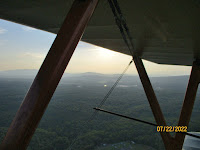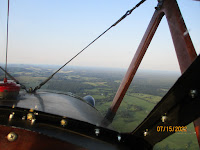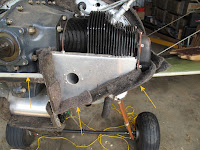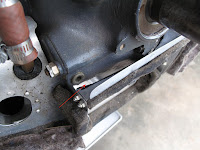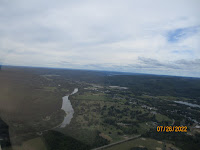I'm still trying to solve my high cylinder head temperature problem. Cylinder cooling depends on the size of the inlet openings, to get good inlet pressure. Then the baffles have to assure the air coming in goes through the cooling fins, with no leaks. The rate of airflow across the cylinders depends on the outlet size to create a pressure drop from above the cylinders to below them.
I started with the assumption that the Taylorcraft nose cowl openings were obviously larger than the old cowl so it should work fine. I've worn myself out looking for leaks and playing with the outlet opening and skirt. I've made some improvements but never solved the problem.
The other day I had the bright idea that maybe the grills on the Taylorcraft cowl were blocking the airflow. After all the Taylorcraft used a 65 HP motor and mine's 85 HP. I decided to remove them and see if it improves the flow, when the airport reopens in November. This required removing the nose cowl to get them out.While I was removing the nose cowl I decided to position the old nose cowl so I could visually compare them (I don't throw things away until I'm sure I won't ever want them). I think the current term is OMG. Houston, we have a problem. The useful area of the Taylorcraft openings is clearly smaller than the old cowl inlets.
I used the prop opening to align the 2 cowls in TurboCAD.
They're ahead of schedule on the runway so I may wait to recover the fuselage until after the runway is done so I can see if this is the answer.










